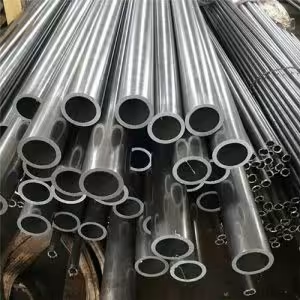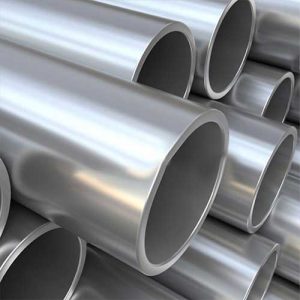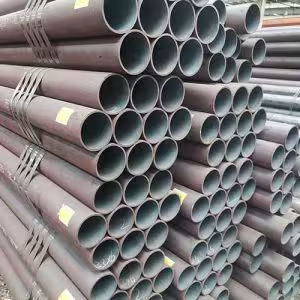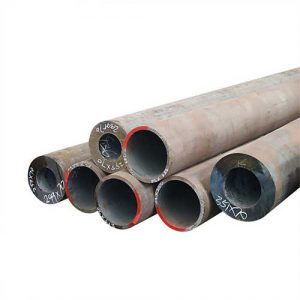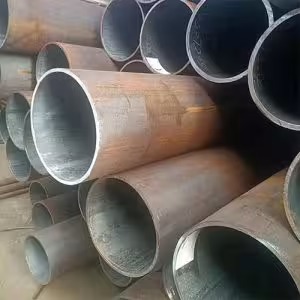مرحبًا بك في مدونتي!
قبل أن نتعمق في المحتوى، أود أن تنضموا إليّ على منصات التواصل الاجتماعي الخاصة بي حيث أشارك المزيد من الأفكار وأتفاعل مع المجتمع وأنشر التحديثات. إليك كيف يمكنك التواصل معي:
فيسبوك : فيسبوكhttps://www.facebook.com/profile.php?id=61565500692293
والآن، لنبدأ رحلتنا معًا. آمل أن تجدوا المحتوى هنا ثاقباً وجذاباً وقيّماً.
جدول المحتويات
مقدمة
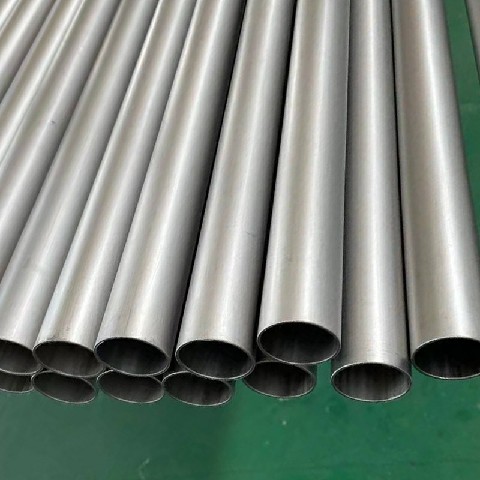
Seamless steel pipes are essential components in various industries, including construction, oil and gas, automotive, and manufacturing. They are widely recognized for their ability to withstand high pressure, temperature, and corrosion, making them ideal for critical applications. However, to ensure the seamless steel pipe performs optimally in different conditions, it is important to understand the dimensions, sizes, and specifications involved in their production.
In this comprehensive guide, we will discuss the key factors that influence seamless steel pipe dimensions, the standards used to measure them, and how to choose the right size for specific applications. We will also provide a detailed table of common seamless steel pipe dimensions, compare different types of pipes, and explain how to select the correct pipe for your needs.
ما هي أنابيب الصلب غير الملحومة?
Seamless steel pipes are made from a solid round steel billet, which is heated and then pushed or pulled through a die to form the pipe shape. Unlike welded pipes, seamless pipes do not have any joints or seams, which makes them stronger and less likely to fail under pressure. These pipes are available in various diameters, wall thicknesses, lengths, and grades, depending on the specific requirements of the application.
Seamless steel pipes are typically used in applications where the pipe is subjected to high pressure and temperature, such as in the oil and gas industry, power generation, water transmission, and construction projects.
Factors Affecting أنابيب الصلب غير الملحومة Dimensions

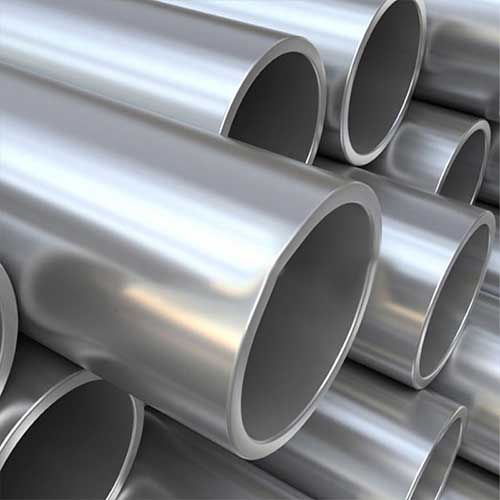
When it comes to seamless steel pipes, several factors influence their dimensions, including material grade, pipe diameter, wall thickness, and pipe length. Understanding these factors is crucial for selecting the right pipe for your project. Here are the key factors that affect seamless steel pipe dimensions:
Pipe Diameter
The diameter of a seamless steel pipe refers to the external width or bore of the pipe. It is one of the most important dimensions to consider, as it determines the flow rate of liquids or gases through the pipe and its compatibility with fittings, valves, and other components.
- Nominal Pipe Size (NPS): The nominal size is a standardized system used to specify pipe diameters. The NPS is typically based on the external diameter of the pipe, measured in inches.
- Outer Diameter (OD): The actual measurement of the external diameter of the pipe, typically in millimeters or inches.
سُمك الجدار
The wall thickness of a seamless steel pipe plays a significant role in determining its pressure rating, strength, and resistance to corrosion. The wall thickness can vary depending on the type of pipe and its intended application.
- Schedule Number (SCH): The schedule number refers to the wall thickness of the pipe. Common schedules for seamless pipes include SCH 40, SCH 80, and SCH 160, with higher numbers indicating thicker walls.
Pipe Length
Seamless steel pipes are available in various lengths, typically ranging from 6 meters to 12 meters. However, they can also be custom-made to suit specific project requirements. The length of the pipe impacts the number of joints and connections needed for a particular installation.
Material Grade and Standards
The material grade of seamless steel pipes is another important factor affecting their dimensions. Different grades of steel offer varying levels of strength, corrosion resistance, and heat resistance. Some common material grades for seamless steel pipes include:
- Carbon Steel: Used for general-purpose applications.
- Alloy Steel: Offers improved strength and resistance to heat and corrosion.
- Stainless Steel: Provides excellent corrosion resistance, often used in harsh environments.
Common Seamless Steel Pipe Dimensions
Seamless steel pipes come in a wide range of dimensions to accommodate various industrial needs. Below is a table showing some of the most common seamless steel pipe dimensions used in different industries. The table provides typical pipe sizes, wall thicknesses, and the corresponding pressure ratings.
| حجم الأنبوب الاسمي (NPS) | القطر الخارجي (OD) | Wall Thickness (SCH 40) | Wall Thickness (SCH 80) | Max Pressure (SCH 40) | Max Pressure (SCH 80) |
|---|---|---|---|---|---|
| 1/2 بوصة | 21.3 mm | 2.77 mm | 3.38 mm | 1,000 psi | 1,500 psi |
| 1 بوصة | 33.4 mm | 3.38 mm | 4.78 mm | 900 psi | 1,300 psi |
| 2 بوصة | 60.3 mm | 4.78 mm | 6.35 mm | 850 psi | 1,250 psi |
| 3 بوصة | 88.9 mm | 5.08 mm | 7.01 mm | 800 psi | 1,200 psi |
| 4 بوصة | 114.3 mm | 6.35 mm | 8.56 mm | 750 psi | 1,150 psi |
| 6 inch | 168.3 mm | 7.01 mm | 9.53 mm | 700 psi | 1,100 psi |
| 8 inch | 219.1 mm | 7.62 mm | 11.1 mm | 650 psi | 1,050 psi |
This table is a general guide to the most common seamless steel pipe dimensions and pressure ratings. However, exact specifications can vary based on the pipe’s grade, material, and intended application.
How to Choose the Right Seamless Steel Pipe Dimensions for Your Project
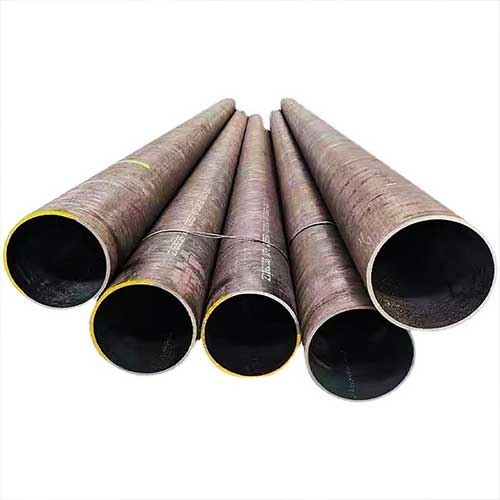
Choosing the right seamless steel pipe dimensions depends on various factors, including the specific needs of your project, the environment in which the pipe will operate, and the fluid or gas it will carry. Here are some tips for selecting the best seamless steel pipe dimensions:
Understand the Flow Requirements
The size of the pipe (NPS and OD) will affect the flow rate of the fluid or gas. A larger diameter pipe allows for a higher flow rate, which may be necessary for industrial applications that require the transport of large volumes of liquids or gases.
Consider Pressure Ratings
The wall thickness of the pipe plays a crucial role in determining its pressure rating. For applications that involve high-pressure environments, choosing a pipe with a thicker wall (SCH 80 or SCH 160) is necessary to ensure that the pipe can handle the pressure without risk of failure.
اختيار المواد
The material grade should match the operating conditions. For example, stainless steel pipes are ideal for corrosive environments, while carbon steel pipes may be sufficient for general-purpose applications. Ensure the material can withstand the temperature and chemical exposure in your specific application.
Standard Compliance
Make sure the seamless steel pipes you choose comply with international standards, such as ASTM (American Society for Testing and Materials) and ISO (International Organization for Standardization). These standards ensure that the pipes meet quality and safety requirements.
الخاتمة
Seamless steel pipes are crucial components in various industries, and understanding their dimensions is essential for ensuring their optimal performance. By considering factors such as pipe diameter, wall thickness, material grade, and pressure ratings, you can select the right seamless steel pipe for your application. Whether you’re involved in the construction, oil and gas, or manufacturing industry, choosing the appropriate pipe dimensions will help you maintain a safe and efficient system.
الأسئلة الشائعة
ما الفرق بين الأنابيب الفولاذية الملحومة وغير الملحومة؟
Seamless steel pipes are made from a solid billet of steel and are free from seams or joints, making them stronger and less prone to failure. Welded pipes, on the other hand, are made by welding together steel strips, which can create potential weak points.
How is the pressure rating of seamless steel pipes determined?
The pressure rating of seamless steel pipes is primarily determined by the wall thickness. Pipes with thicker walls can withstand higher pressures. The material grade also plays a role in the pipe’s ability to handle pressure.
ما هي الصناعات التي تستخدم أنابيب الصلب غير الملحومة؟
Seamless steel pipes are widely used in industries such as construction, oil and gas, chemical processing, automotive, and power generation.
هل يمكن تخصيص أنابيب الصلب غير الملحومة؟
Yes, seamless steel pipes can be customized in terms of size, material grade, and length to meet specific project requirements.
How do I calculate the size of a seamless steel pipe I need?
To calculate the appropriate size, consider factors such as the desired flow rate, pressure requirements, and the type of material being transported. Consult with a pipe supplier or engineer to ensure the right dimensions are chosen for your application.
Are there international standards for seamless steel pipes?
Yes, seamless steel pipes must meet international standards such as ASTM, ISO, and ASME, which specify the required material properties, dimensions, and testing methods.



